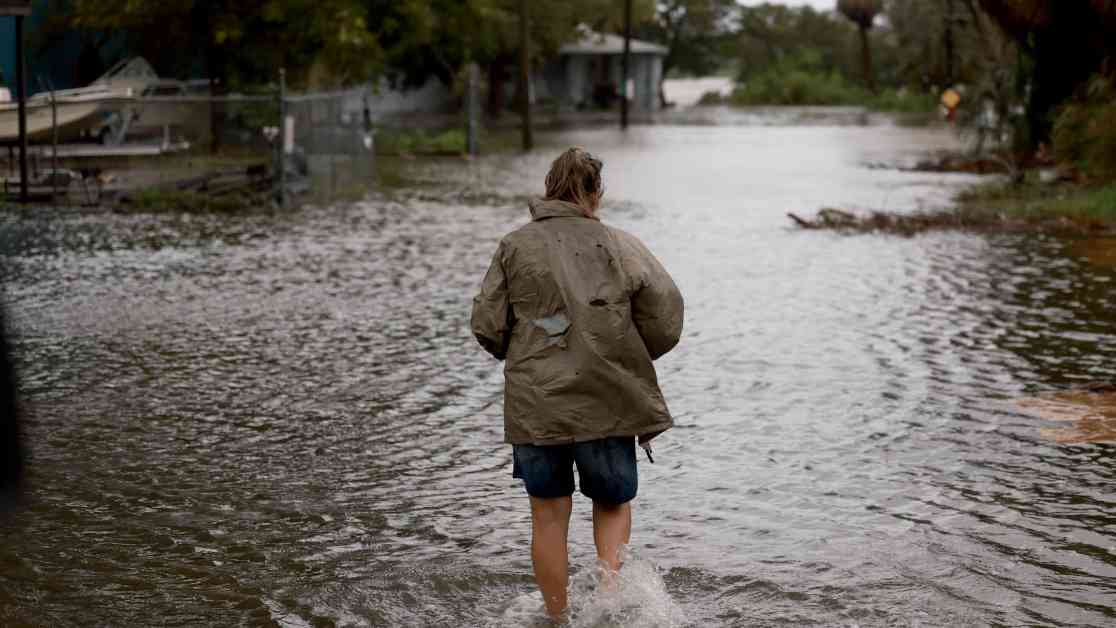**Basement Damage and Flood Insurance: What You Need to Know**
The aftermath of a flood can be devastating, especially when it comes to basement damage. Floods are a common natural disaster in the United States, causing significant destruction and financial loss. While many homeowners may assume that their insurance policies cover flood damage, the reality is that most standard policies do not include this coverage. This article will delve into the details of what is not covered by flood insurance for basement damage and provide important information for homeowners to consider.
**The Need for Separate Flood Insurance Policies**
Floods are responsible for 90% of annual disaster damage in the U.S., according to the Federal Emergency Management Agency (FEMA). Despite the widespread impact of floods, homeowners and renters insurance policies typically do not cover flood damage. To protect against the financial burden of flood-related losses, consumers need to purchase a separate flood insurance policy.
Flood insurance is designed to cover physical damage caused by water entering a home from the ground up. This can occur due to storm surge, heavy rainfall, or overflowed bodies of water like lakes or rivers. Most individuals obtain flood insurance through FEMA’s National Flood Insurance Program (NFIP), which had approximately 4.4 million residential policies in force at the end of 2023, totaling $1.2 trillion in coverage.
While the average annual flood insurance premium was $700 in 2019, FEMA data shows that nearly 21,000 policyholders filed claims in 2023, with an average payment of almost $46,000. Private insurers also offer flood policies, which may provide higher coverage limits compared to FEMA’s policies, according to the Insurance Information Institute.
**Items Not Covered in a Basement by Flood Insurance**
Basements serve as versatile spaces in American homes, often used for storage, entertainment, or additional living areas. However, NFIP policies have limitations when it comes to covering basement items. FEMA defines a basement as any area of a building with a floor below ground level on all sides, including rooms that are partially below ground level.
Unfortunately, NFIP policies exclude certain items from coverage in a basement, including personal property like furniture, electronics, and basement improvements such as finished flooring and walls. Generators and dehumidifiers are also not covered, along with items stored in a basement that is not connected to a power source.
Policyholders who wish to insure specific basement items, such as clothes washers, dryers, air conditioners, and food freezers, can purchase additional “contents coverage” through NFIP. This optional coverage extends protection to these items if they are connected to a power source. Private insurance policies may offer broader coverage for basement contents, depending on the insurer.
**Enhancing Basement Coverage and Understanding Policy Inclusions**
In February 2024, FEMA proposed updates to its NFIP program to potentially enhance coverage for basements. Policyholders with basements have often been surprised by the limited coverage provided under the current Dwelling Form. While flood insurance primarily focuses on the structure of the building, certain basement items may be covered by NFIP policies if policyholders opt for additional contents coverage.
Examples of items covered by NFIP policies in basements include central air conditioners, fuel tanks, furnaces, water heaters, sump pumps, and electrical components like outlets and switches. Policyholders can also receive compensation for cleanup costs associated with flood damage, such as mold remediation and structural drying.
To ensure a smooth claims process in the event of flooding, FEMA recommends documenting the manufacturer, model, serial number, and capacity of equipment in the basement. This information is vital for filing a claim and receiving compensation for covered items and expenses.
**The Changing Landscape of Basement Construction**
One positive trend in the housing industry is the decreasing prevalence of basements in new single-family homes. According to U.S. Census Bureau data, the share of new homes with full or partial basements has declined significantly since the mid-1970s, from 45% to 21% as of 2022. This shift may reduce the risk of basement-related flood damage for homeowners in the future.
Despite this trend, it remains crucial for homeowners with basements to understand their insurance coverage and take proactive measures to protect their property. While flood insurance may not cover all items in a basement, policyholders can explore additional coverage options and preventive strategies to mitigate potential losses in the event of a flood.
In conclusion, basement damage from floods can have a significant impact on homeowners, both financially and emotionally. By understanding what is not covered by flood insurance for basement damage and exploring options for additional coverage, homeowners can better protect their property and assets. Stay informed, review your insurance policy, and consider the potential risks associated with basement items to safeguard your home against the uncertainties of flooding.















